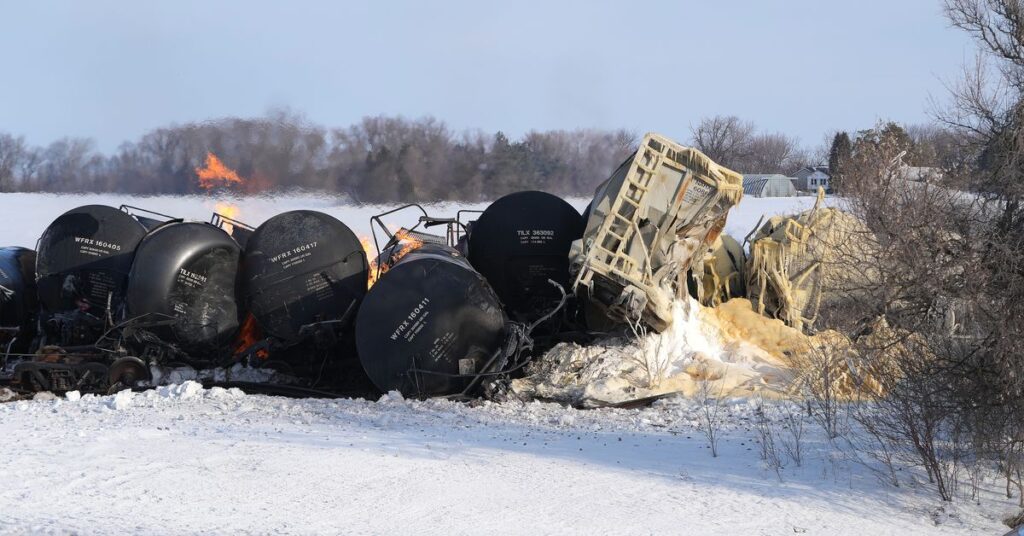A train carrying hazardous chemicals derailed in Raymond, Minnesota, on Thursday, the latest such accident in recent months. Thursday’s incident comes in the wake of a major train derailment in East Palestine, Ohio on February 3, when a Norfolk Southern train carrying toxic chemicals went off the tracks, spewing contaminants into the town’s air and water.
Although train derailments involving hazardous chemicals are relatively rare, the occurrence of the Minnesota derailment so close to the Ohio one has raised questions about train safety and whether new regulations are needed to prevent more of these dangerous incidents from happening in the future. According to the Washington Post, there were 1,049 train derailments last year, and 10 train incidents that involved the spillage of hazardous materials, both figures which are lower than years past.
The train derailment in Minnesota involved a 40-car train, 14 of which were hauling hazardous chemicals including ethanol, according to CNN. BNSF Railway, the company operating the train, says 22 cars derailed and four cars ignited and caught fire. Residents living within a half-mile radius of the accident have been forced to evacuate as a safety precaution, with no injuries or fatalities reported so far. The train was also carrying corn syrup, and derailed around 1 am Central time.
Ethanol is a hazardous and highly flammable chemical, which can cause symptoms including drowsiness, nausea, and unconsciousness following exposure. At this point, it’s not yet clear what caused the derailment or what additional impact it could have on the surrounding area. According to the Kandiyohi County Sheriff’s Office, the fire at the crash site is being contained.
Derailments are often tied to equipment failures, human error, and track defects
While we still don’t know what caused the Minnesota train derailment, there are factors we know about that may contribute to rail accidents overall. Human error and track defects…
Read the full article here





